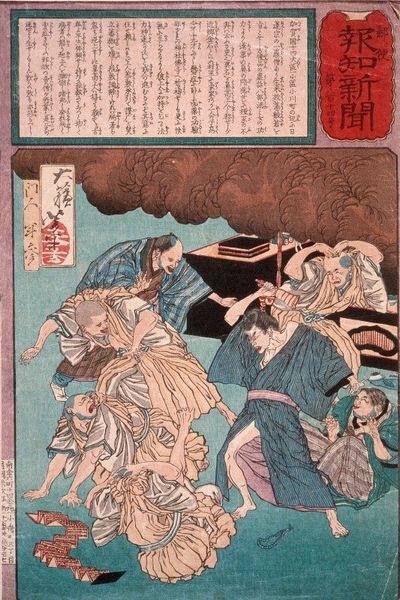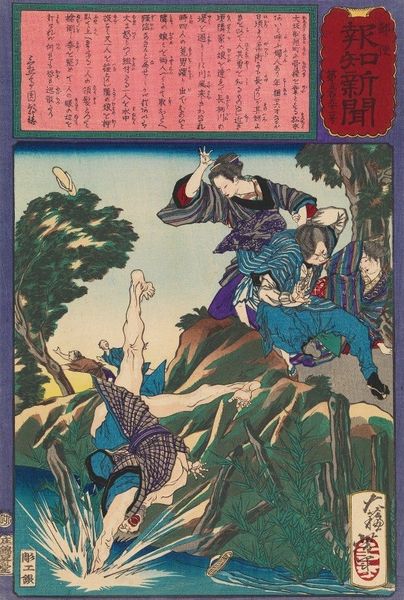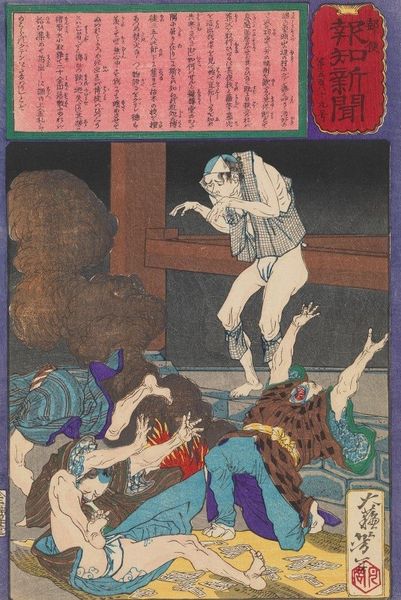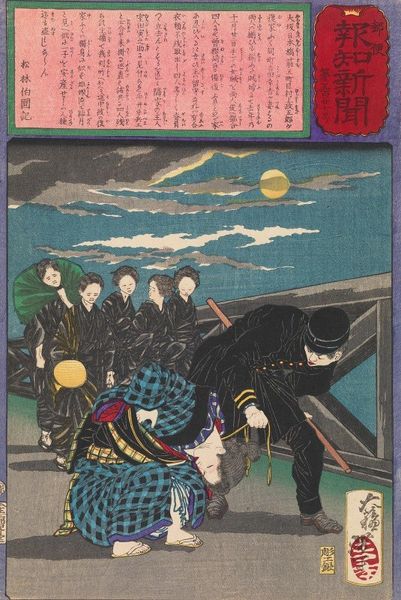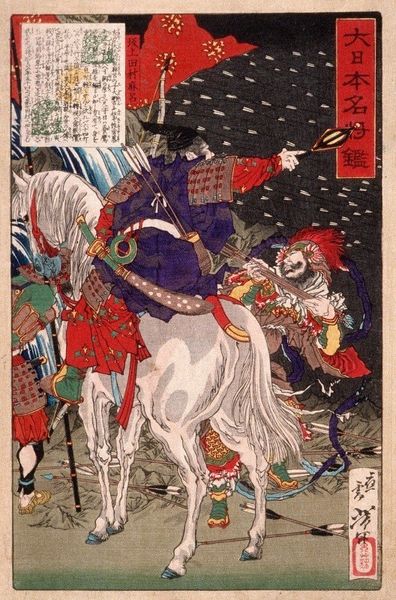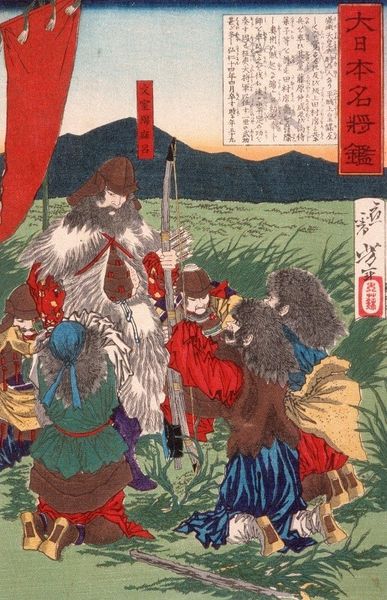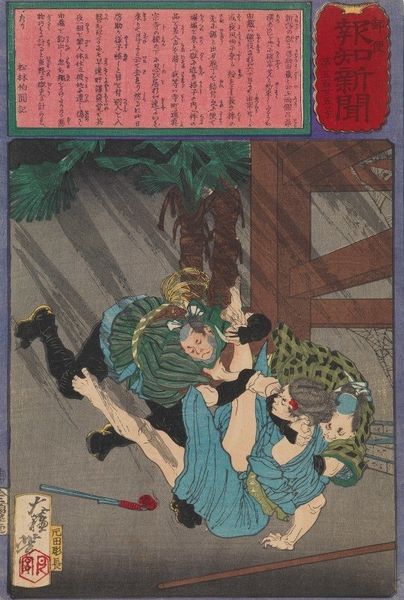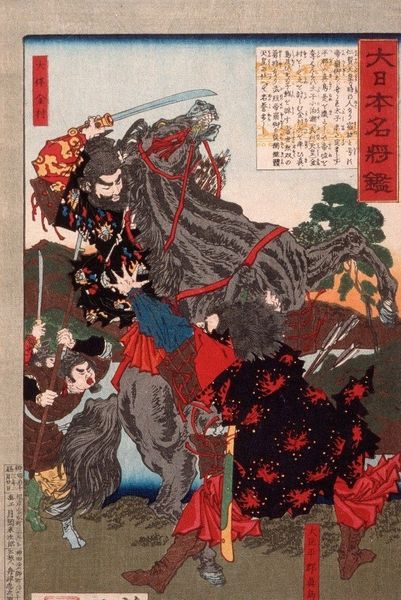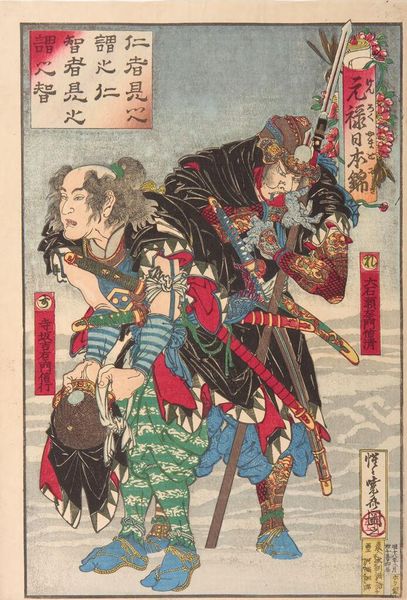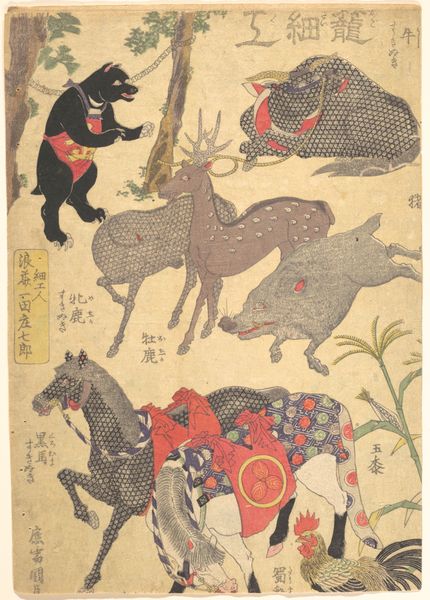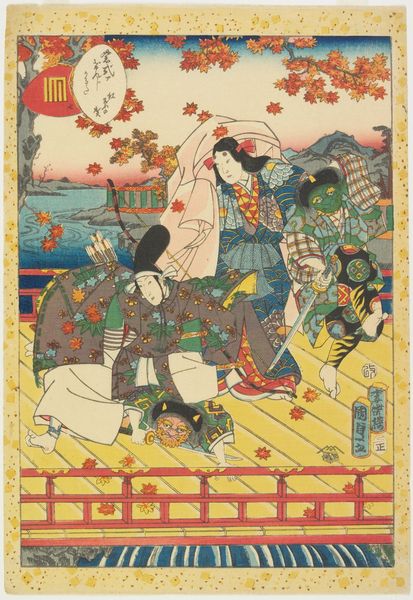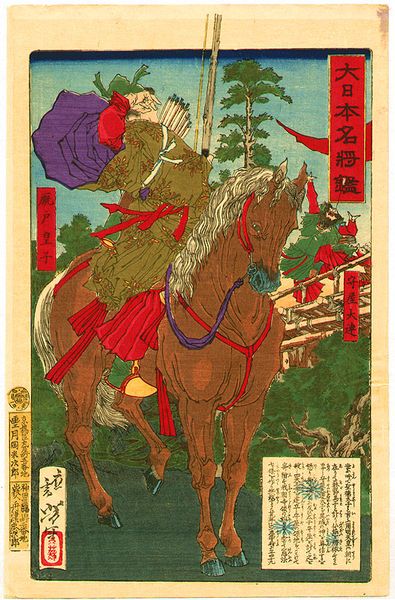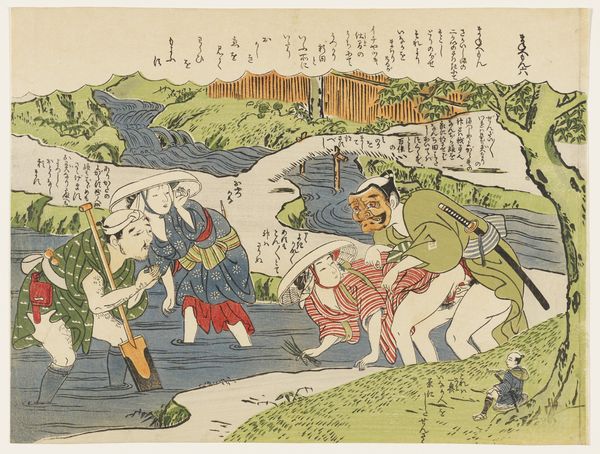
Copyright: Public Domain: Artvee
Art Historian: Alright, let’s get started. Editor: So, this is "Child Calms a Horse by Covering His Head with Her Jacket," created in 1875 by Tsukioka Yoshitoshi. It’s a woodblock print, part of the Ukiyo-e tradition. What immediately strikes me is the stillness in the middle of what feels like chaos. The horse seems agitated, but the child is so calm. What do you see in this piece? Art Historian: What grabs me is the narrative Yoshitoshi is building around societal power structures, even if seemingly subtle. Notice how the child’s action – the act of calming the horse – becomes a powerful moment. It interrupts the expected social hierarchy where adults are dominant. Do you see the expressions and postures of other adults? How might the artist be commenting on societal roles here? Editor: I see what you mean. The other figures look almost helpless or surprised, like they’re used to being in charge. The child's agency is striking, given the era and expectations around gender and age. But where did the agency of women and youth fit into Japan at this time? Was Yoshitoshi pointing at a need for more? Art Historian: Exactly! Yoshitoshi lived through the Meiji Restoration, a period of immense social and political change. His prints often address the tensions between tradition and modernization. The child subverting the control of an unruly animal, is an act of localized rebalancing that can reflect a more macro push for gender equality within a rigidly-hierarchical Imperial state. It may also be related to labor issues or social movements of the time. Can this piece be considered propaganda? Editor: That’s really fascinating! I didn't consider those tensions. I initially just saw a simple act of kindness. Art Historian: That’s understandable. But by analyzing art with historical, social, and political context, we understand art history’s profound impact and why these messages persist across generations. The artist challenges us to think about authority, societal norms, and the potential for subversion within everyday actions. Editor: Wow, I will look at prints, and other works of art from the 1800's with much broader eyes. Art Historian: Wonderful, that's exactly the purpose of contextual learning!
Comments
No comments
Be the first to comment and join the conversation on the ultimate creative platform.
